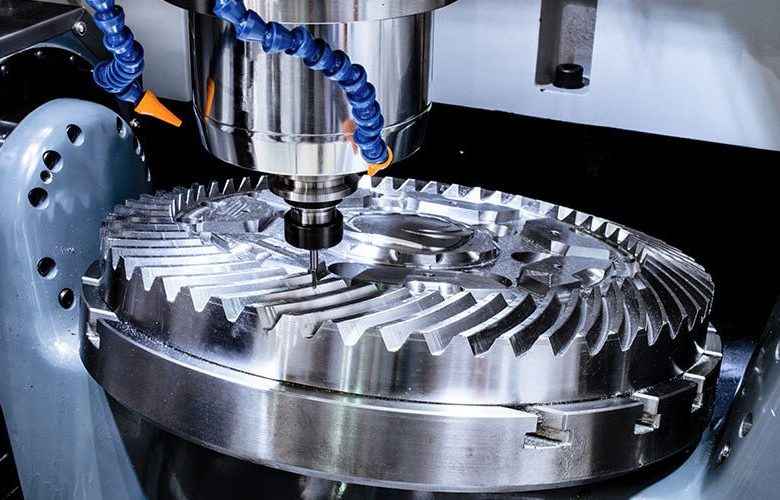CNC machines are electro-mechanical devices that manipulate machine shop tools using computer programming inputs. The name “CNC” actually means Computer Numerical Control. It represents one of two standard methods (3D printing technology like SLA, SLS/SLM, and FDM being the other) to build prototypes from a digital software file. Engineering and prototyping companies may use CNC machines to mill and process various materials, including wood, metals, and plastics.
How it Works
In general, machining is a way to transform a stock piece of material such as a block of plastic and reach a finished product (typically a prototype part) utilizing a controlled material removal process. Very much like another prototype development technology, FDM (3D printing), CNC depends on digital instructions from a Computer-Aided Manufacturing (CAM) or Computer-Aided Design (CAD) file like Solidworks 3D. While the CAM or CAD does not run the CNC machine itself, they supply the roadmap for the CNC to fabricate the looks. The CNC machine interprets the design as instructions for cutting prototype parts.
The ability to program computer devices to control machine tools rapidly advances shop productivity by automating the highly technical and labor-intensive processes. Automated cuts improve both the speed and the accuracy with which prototype parts can be created – in particular when the material is critical (such as is the case with polypropylene).
Frequently machining processes require the utilization of multiple tools to make the desired cuts (e.g., different sized drill bits). CNC machines commonly combine tools into common units or cells that the equipment can draw. Basic machines move in one or two axes, while advanced machines move laterally in the x, y-axis, longitudinally in the z-axis, and frequently rotationally about more than one axes. Multi-axis machines can handle flipping parts over automatically, letting you remove material that was previously “underneath.” This eliminates the need for personnel to flip the prototype stock material and permits someone to cut all sides with no need for manual intervention. Entirely automated trims are usually more accurate than what is possible with manual inputs. In spite of this, sometimes finishing work like etching is better accomplished by hand and simple cuts that could require comprehensive design work to program the machine for automation. For more detail please visit Timber Ridge Designs Blog
Types of CNC Machines
As you decide which CNC machines to increase your operation, there are a few considerations you will need to consider. CNC machines typically fall into one of the two general categories: conventional machining technologies and novel machining technology. Each kind offers you advantages and disadvantages. You need to factor in your project’s particular needs when selecting the sort of CNC machine to add to your workshop. The next infographic covers a few of the similarities and dissimilarities between conventional and novel CNC machines:
Conventional Technologies:
- Drills: Drills work by spinning a drill bit and moving the bit about and into contact with a stationary block of stock material. CNC drills help to make precision holes where you need them.
- Lathes: Lathes, quite definitely the inverse of drills, spin the block of material against the drill bit (rather than spinning the drill bit and putting it into exposure to the material). Lathes typically make contact with the material by laterally moving a cutting tool until it progressively touches the spinning material. Primarily combined with metals and wood, lathes take away the unwanted excess material and leave behind a lovely and finally more useful component.
- Milling Machines: Milling machines are most likely the most frequent CNC machine being used today. They involve the use of rotary cutting tools to remove material from the stock unit. They are able to perform various functions, including drilling, boring, cutting gears, and producing slots in just a given piece of material.
Novel Technologies:
- Electrical and/or Chemical Machining: There are a number of novel technologies that use specialized ways to cut material. Examples include Electron Beam Machining, Electrochemical machining, Electrical Discharge Machining (EDM), Photochemical machining, and Ultrasonic machining. Many of these technologies are highly specialized and are used in special cases for mass-production involving a specific kind of material.
- Other Cutting Mediums: There are a variety of other novel technologies that use different mediums to cut material. For example laser cutting machines, oxy-fuel cutting machines, plasma cutting machines, and water-jet cutting technology. These machines have gained popularity in several industries in recent years; however, they are really still highly specialized devices.




